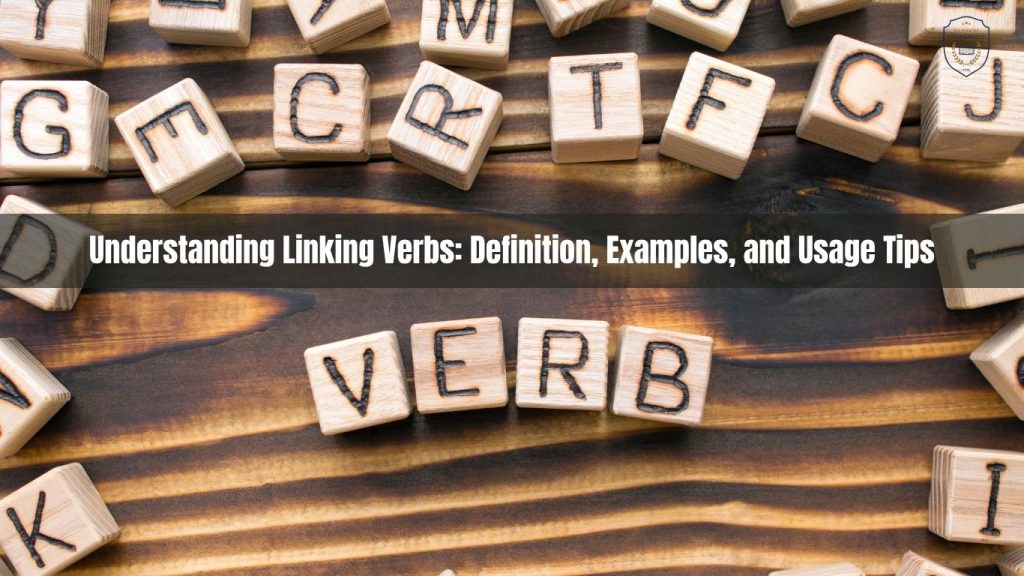Linking verbs which are also called copular verbs function as vital elements in English grammar because they connect the subject of a sentence to its subject complement. Linking verbs differ from action verbs because they lack any form of action in their structure. These words function as essential connectors which provide extra details about the subject to make sentences more understandable and meaningful.
The verb “to be” functions as the primary linking verb because it exists in multiple forms which include “am,” “is,” “are,” “was,” and “were.” These verbs are fundamental in forming descriptions, identifications, or states of being. The list of linking verb also includes the following verbs: become, seem, appear, feel, look, sound, taste, smell. The verbs in this category express sensory experiences and changes in state or condition which link the subject to descriptive adjectives or nouns.
The sentence “The cake smells delicious” demonstrates how the verb “smells” connects the subject “cake” to the adjective “delicious” which describes the sensory qualities of the cake. The example shows how linking verbs enable more detailed subject descriptions which helps people understand messages better.
Definition and Function:
The English language requires linking verbs to connect subjects with their descriptive complements which usually take the form of adjectives or nouns or pronouns that explain the subject. Linking verbs differ from action verbs because they describe the subject instead of showing physical or mental actions that the subject performs.
The verb “to be” functions as the most common linking verb in English because it includes all its present and past forms which consist of “is,” “am,” “are,” “was,” and “were.” These forms function to describe the present condition or describe the essential qualities of the subject. In the sentence “She is a doctor,” the verb “is” serves to link the subject “She” with the noun “doctor” which defines her professional role.
The English language contains several linking verbs which exist alongside the basic “to be” verbs. The verbs “become” and “seem” function as common linking verbs which describe changes and how things appear to people. The verb “became” in the sentence “He became restless” shows how “He” transitioned into the state of being “restless.” The word “seems” in the sentence “The proposal seems feasible” links “The proposal” to the adjective “feasible” which shows how the speaker evaluates the situation.
Learning how to use linking verbs properly helps people create exact descriptions when they write or speak by showing the current state and characteristics and how things appear to others.
Common Examples:
The term linking verbs refers to all verbs that function as links between subjects and their complements which describe states or perceptions. These verbs do not denote action but instead connect the subject to additional information that enhances understanding of its identity or condition. The verb “to be” serves as a primary linking verb which includes its various forms “is,” “am,” “are,” “was,” and “were” along with other common linking verbs such as “appear,” “feel,” “look,” “sound,” “taste,” and “smell.”
The verbs function to express both sensory details and personal viewpoints. The linking verb “is” functions as a connection between the subject “She” and the noun “a teacher” in the sentence “She is a teacher” to show her occupation without expressing any action. The verb “tastes” in the sentence “The soup tastes delicious” establishes a connection between the subject “soup” and the adjective “delicious” to describe the flavor of the soup through sensory perception.
Each linking verb performs a specific function, often tied to sensory experiences or subjective evaluations. The word “appear” functions as a visual impression in the sentence “He appears calm” because it links the subject “He” to the adjective “calm” which describes his behavior. The sentence “The music sounds amazing” uses “sounds” to connect “The music” with the adjective “amazing” which describes the way it sounds.
Mastering the use of linking verbs thus allows for more detailed and nuanced descriptions, essential for effective communication. The use of these verbs enables speakers and writers to describe more than actions because they also express states and conditions and sensory impressions which results in more expressive and informative language.
Usage Tips:
Conclusion
The ability to construct sentences with linking verbs stands as a fundamental skill because it helps you describe subjects effectively which results in improved communication clarity. Linking verbs establish the basis for expressing states of existence and emotional states and sensory experiences which active verbs fail to express. These elements serve as essential components for daily communication because they enable people to describe things in detail and identify objects precisely.
The main purpose of linking verbs exists to build sentences which help identify or describe subjects and establish additional meaning that promotes deeper understanding. For example, the sentence “He is happy” uses the linking verb “is” to connect the subject “He” to the adjective “happy.” The sentence structure describes the subject’s emotional state without showing any physical action.
People develop their descriptive and exact language abilities through learning about linking verbs which apply to storytelling and academic writing as well as daily speech. Speakers and writers achieve better communication precision through their use of linking verbs which results in more precise and engaging information delivery. The process of understanding leads to better organization and presentation of thoughts in both written and spoken communication.
Ralated:
- Mastering Conditional Sentences in English: A Key to Advanced Communication
- Mastering the Present Continuous Tense: Key Aspects and Usage
- Understanding the Present Perfect Tense in English
Keywords:
- Linking verb examples
- Linking verb list
- Linking verb exercise
- Linking verb and phrases
- Linking verb adverb
- Linking verb sentences
- Linking Verb predicate
- Linking verb examples with answers
Sources:
- Purdue Online Writing Lab (OWL). (n.d.). Linking Verbs: Definition and Examples. Purdue University.
- Grammar Girl. (n.d.). Understanding Linking Verbs. Quick and Dirty Tips.


 Tiếng Việt
Tiếng Việt